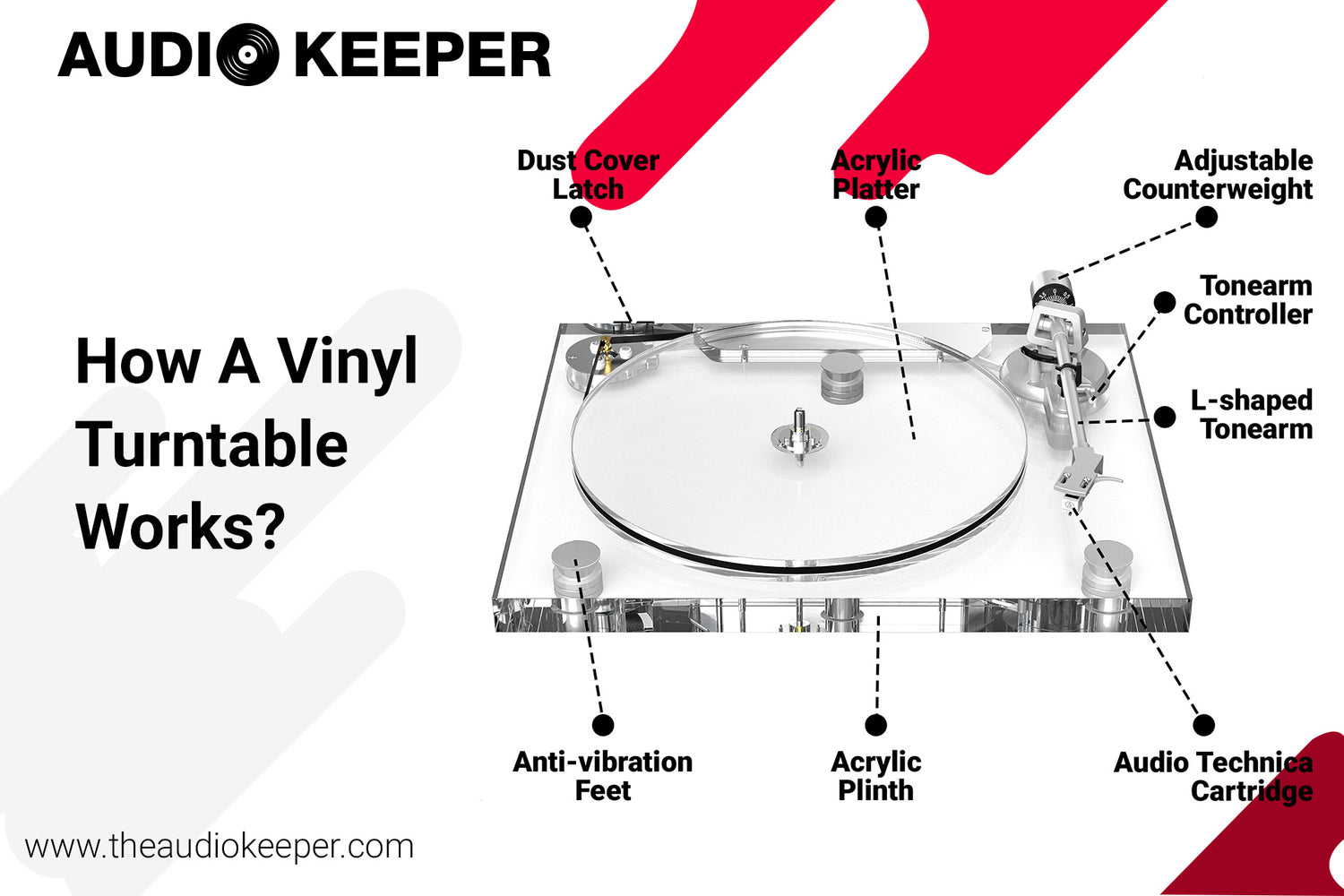Introduction
Record players, as traditional music playing equipment, have always been favored by music lovers. However, for many people, how a record player works remains an area of mystery. This article will delve into how a record player works, including the basics of turntables, vinyl records, and sound amplification devices, to help readers better understand this ancient and beautiful way of playing music.
Turntable: The core component of a record player
The core of a record player is the turntable, which is the platform that supports and spins the vinyl record. The turntable is usually made of metal or plastic and has a smooth and flat surface to ensure that the record spins smoothly. The turntable is precisely designed to ensure that the record remains stable while it is being played so that the sound quality is not compromised.
Vinyl records: the carrier of music
Vinyl records are the carrier of music played by record players. It is made of polyvinyl chloride (PVC) and is coated with a special plastic that allows the record to record music signals. The musical signal is engraved on the surface of the record in the form of concavities and convexities, and the stylus recognizes and converts these concavities into sound. Vinyl records are not only a musical medium, but also a work of art. Both the cover design and the craftsmanship of the record itself are highly regarded.
Sound amplification device: converts signals into sound
The final piece of the record player is the sound amplification device, which is responsible for converting the signal read from the vinyl record into audible sound. This process involves components such as styli, speakers, and amplifiers. As the record rotates, the stylus moves along the concave and convex surfaces of the record, and these movements are converted into electrical signals and fed into the amplifier. The amplifier amplifies the signal and converts it into sound through the speaker, allowing the music to travel.
How a record player works
The working principle of a record player can be simply summarized as follows: the record is placed on the turntable, the stylus lightly touches the surface of the record, and as the turntable rotates, the stylus moves along the concave and convex surfaces of the record. These movements are converted into electrical signals, which are processed by a sound amplification device and finally converted into audible sound.
Conclusion
Although in the digital music era, many people have turned to more convenient ways to play music, the record player, as a traditional music playing device, still has a unique charm. By understanding how a record player works, we can not only better appreciate its beauty, but also gain a deeper understanding of how music is transmitted. The record player is not only a music playing device, but also a work of art. Its existence allows us to feel the unique charm of music.
Record players, as traditional music playing equipment, have always been favored by music lovers. However, for many people, how a record player works remains an area of mystery. This article will delve into how a record player works, including the basics of turntables, vinyl records, and sound amplification devices, to help readers better understand this ancient and beautiful way of playing music.
Turntable: The core component of a record player
The core of a record player is the turntable, which is the platform that supports and spins the vinyl record. The turntable is usually made of metal or plastic and has a smooth and flat surface to ensure that the record spins smoothly. The turntable is precisely designed to ensure that the record remains stable while it is being played so that the sound quality is not compromised.
Vinyl records: the carrier of music
Vinyl records are the carrier of music played by record players. It is made of polyvinyl chloride (PVC) and is coated with a special plastic that allows the record to record music signals. The musical signal is engraved on the surface of the record in the form of concavities and convexities, and the stylus recognizes and converts these concavities into sound. Vinyl records are not only a musical medium, but also a work of art. Both the cover design and the craftsmanship of the record itself are highly regarded.
Sound amplification device: converts signals into sound
The final piece of the record player is the sound amplification device, which is responsible for converting the signal read from the vinyl record into audible sound. This process involves components such as styli, speakers, and amplifiers. As the record rotates, the stylus moves along the concave and convex surfaces of the record, and these movements are converted into electrical signals and fed into the amplifier. The amplifier amplifies the signal and converts it into sound through the speaker, allowing the music to travel.
How a record player works
The working principle of a record player can be simply summarized as follows: the record is placed on the turntable, the stylus lightly touches the surface of the record, and as the turntable rotates, the stylus moves along the concave and convex surfaces of the record. These movements are converted into electrical signals, which are processed by a sound amplification device and finally converted into audible sound.
Conclusion
Although in the digital music era, many people have turned to more convenient ways to play music, the record player, as a traditional music playing device, still has a unique charm. By understanding how a record player works, we can not only better appreciate its beauty, but also gain a deeper understanding of how music is transmitted. The record player is not only a music playing device, but also a work of art. Its existence allows us to feel the unique charm of music.









Leave a comment
All comments are moderated before being published.
This site is protected by hCaptcha and the hCaptcha Privacy Policy and Terms of Service apply.